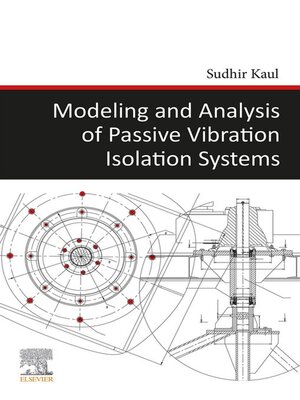
Sign up to save your library
With an OverDrive account, you can save your favorite libraries for at-a-glance information about availability. Find out more about OverDrive accounts.
Find this title in Libby, the library reading app by OverDrive.



Search for a digital library with this title
Title found at these libraries:
| Library Name | Distance |
|---|---|
| Loading... |
Modeling and Analysis of Passive Vibration Isolation Systems discusses a wide range of dynamic models that can be used for the design and analysis of passive vibration isolation systems. These models range from linear viscoelastic single degree-of-freedom systems to multiple degree-of-freedom nonlinear systems. They can be used to evaluate hyperelasticity and creep, and to represent the inertia effect for an evaluation of vibroacoustic characteristics at high frequencies. This book also highlights specific nonlinear behavior, displacement-limiting designs, hyperelastic behavior, and characteristics associated with elastomeric materials for each model. It also identifies key attributes, limitations, and constraints, providing a holistic reference that can be used for the design and analysis of passive vibration isolators. Modeling and Analysis of Passive Vibration Isolation Systems serves as a reference for engineers and researchers involved in the design, development, modeling, analysis, and testing of passive vibration isolation systems and as a reference for a graduate course in vibration modeling and analysis.
- Outlines the use of multiple models for optimal passive vibration isolation system design - Discusses the effects system design has on subsequent product development components and parameters - Includes applied examples from the automotive, aerospace, civil engineering and machine tool industries - Presents models that can be extended or modified to investigate different means of passive isolation, nonlinearities, and specific design configurations - Considers specific elastomer characteristics such as Mullins and Payne effects for theoretical modeling and analysis







